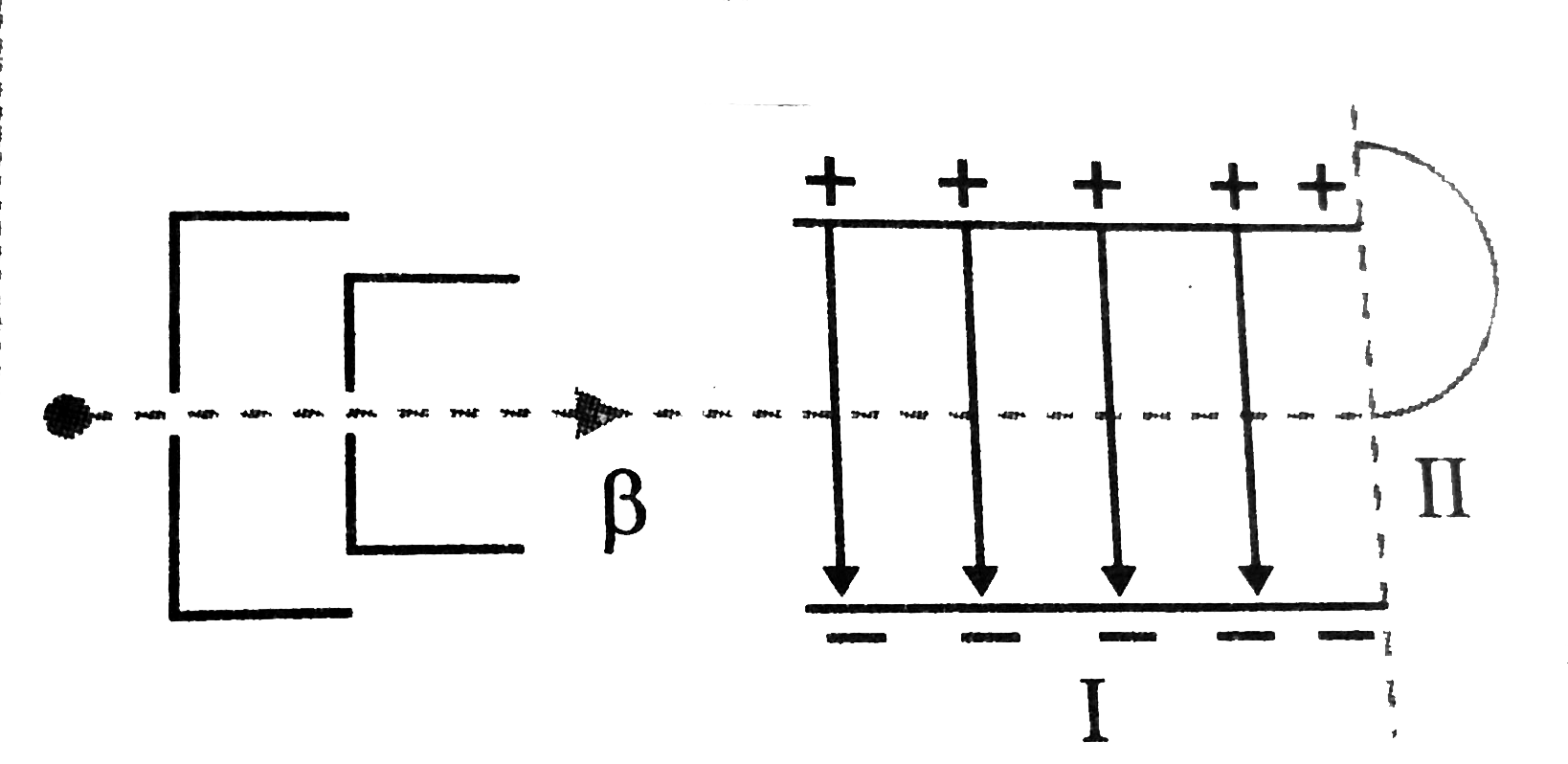A fine pencil of β-particles, moving with a speed v, enters a region (region I), where a uniform electric field and a uniform magnetic field are both present. These β-particles then move into region II where only the magnetic field, (out of the two fields present in region I) exists. The path of the β-particles, in the two regions is as shown in the figure.

(i) state the direction of magnetic field.
(ii) state the relation between E and B in region I.
(iii) Drive the expression for the radius of the circular path of the β-particle in region II.
(iv) If the magnitude of magnetic field, in region II is changed to n times its earlier value, (without changing the magnetic field in region I) find the factor by which the radius of this circular path would change.
(i) As the β-particle goes undeviated while passing through the electric and magnetic fields, so the force on moving β-particle due to electric field (−e→E) must be equal and opposite to the force due to magnetic field [−e(→v×→B)]. Due to it, the direction of →B must be perpendicular to plane of paper downwards.
(ii) In region I as β-particle goes undeviated
−e→E=−e(→v×→B) or eE=evB or v=E/B
(iii) If r is the radius of circular path of the β-particle in region II, then
evB=mv2/r or r=mveB
(iv) If B′=nB, then r′=mveB′=mvneB
∴r′r=1n or r′=rn
Topper's Solved these Questions
- BOOK - PRADEEPCHAPTER - MAGNETIC EFFECT OF CURRENT AND MAGNETISMEXERCISE - Conceptual Problems (d)2videos
MAGNETIC EFFECT OF CURRENT AND MAGNETISM
- BOOK - PRADEEPCHAPTER - MAGNETIC EFFECT OF CURRENT AND MAGNETISMEXERCISE - Very Short Answer Questions (a)2videos
MAGNETIC EFFECT OF CURRENT AND MAGNETISM
- BOOK - PRADEEPCHAPTER - ELECTROSTATICSEXERCISE - ASSERTION-REASON TYPE QUESTIONS2videos
ELECTROSTATICS
- BOOK - PRADEEPCHAPTER - OPTICSEXERCISE - Multiple choice questions1videos
OPTICS
Similar Questions
Knowledge Check
- Question 1 - Select One
In a region where both non-zero uniform electric field and magnetic field coexist, the path of a charged particle
Acan not be a circleBmay be a circleCmay be a straight lineDmay be a helix - Question 2 - Select One
A charge particle travels along a straight line with a speed v in region where both electric field E and magnetic field b are present.It follows that
A|E|=|B| and the two field are perpendicularB|E|=v|B| and the two field are perpendicularC|B|=v|E| and the two field are parallelD|B|=v|E| and the two fields are perpendicular - Question 3 - Select One
A charged particle is released from rest in a region of steady uniform electric and magnetic field which are parallel to each other. The particle will move in a
Astraight lineBcircleChelixDcycloid
A particle of mass m and charge q is thrown in a region where uniform gravitational field and electric field are present. The path of particle:
View SolutionA particel of mass m and charfe q is throun in a region wihere unirfrom gravittional field and electric field are present . The path of particle -
View SolutionForce acting on a moving charged particle in a region of electric and magnetic fields is called
View SolutionA uniform electric field and a uniform magnetic field exist in a region in the same direction. An electron is projected with a velocity pointed I the same direction. Then the electron will:
View SolutionA β-particle enters a magnetic field making an angle of 45∘ with the field lines. The path of the particle is
View Solution

